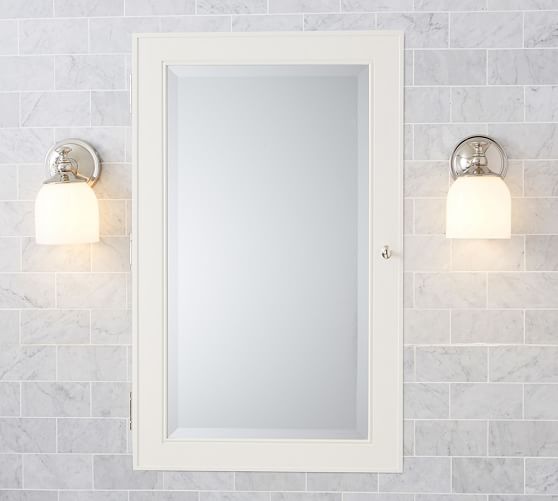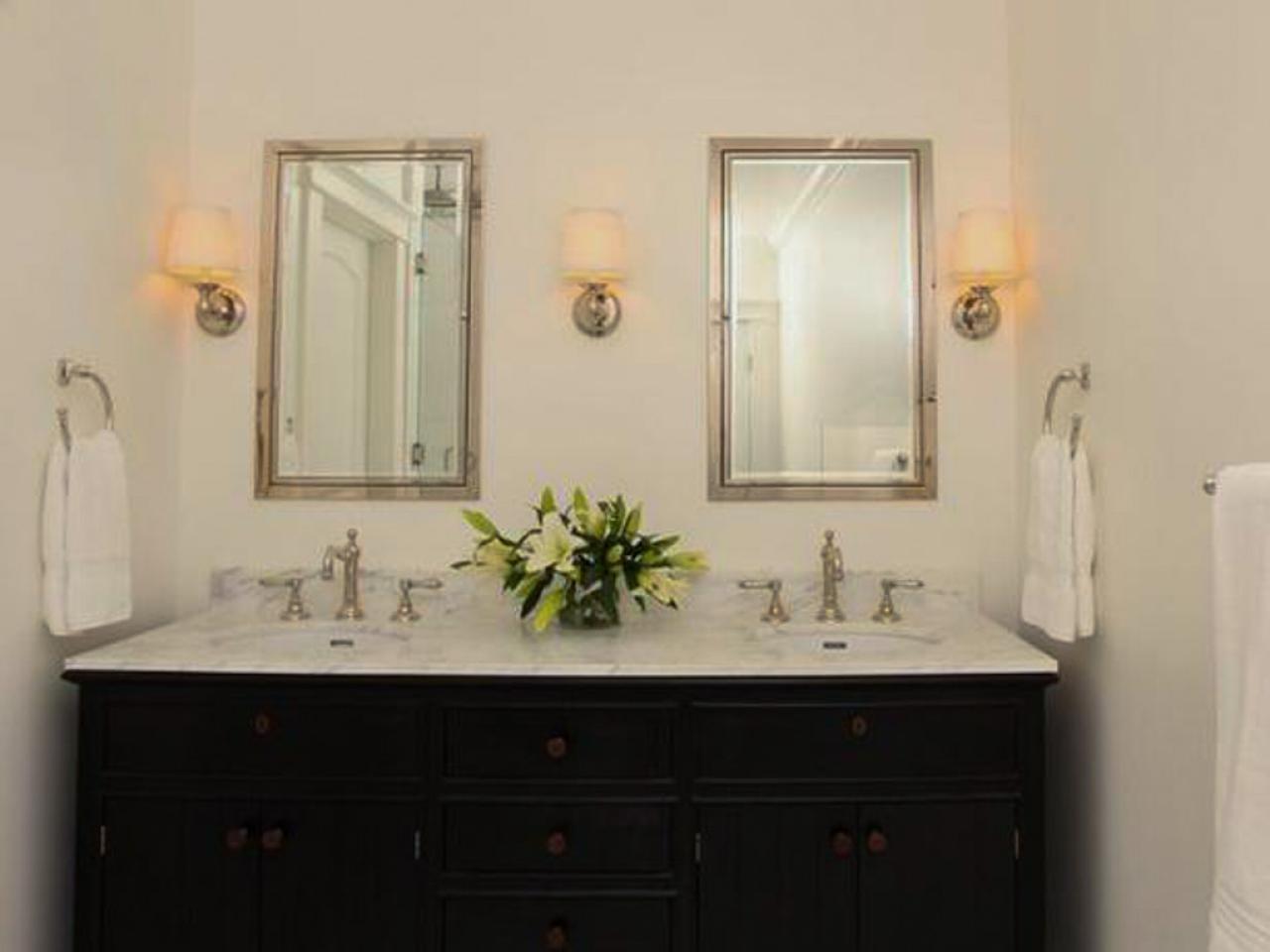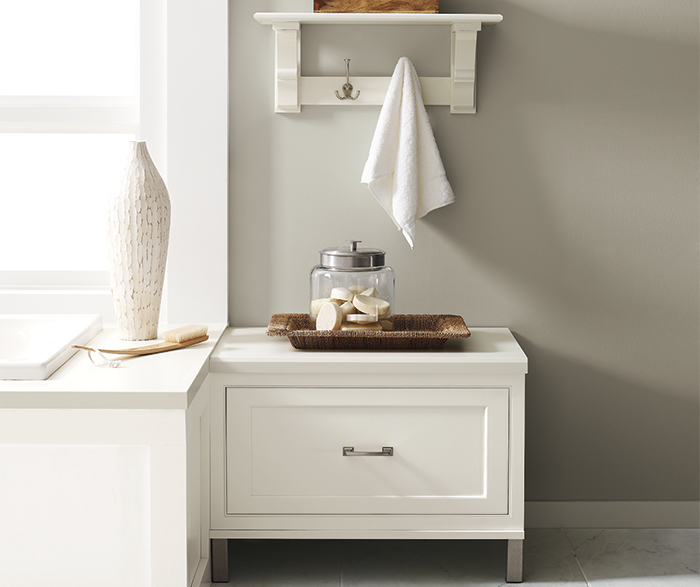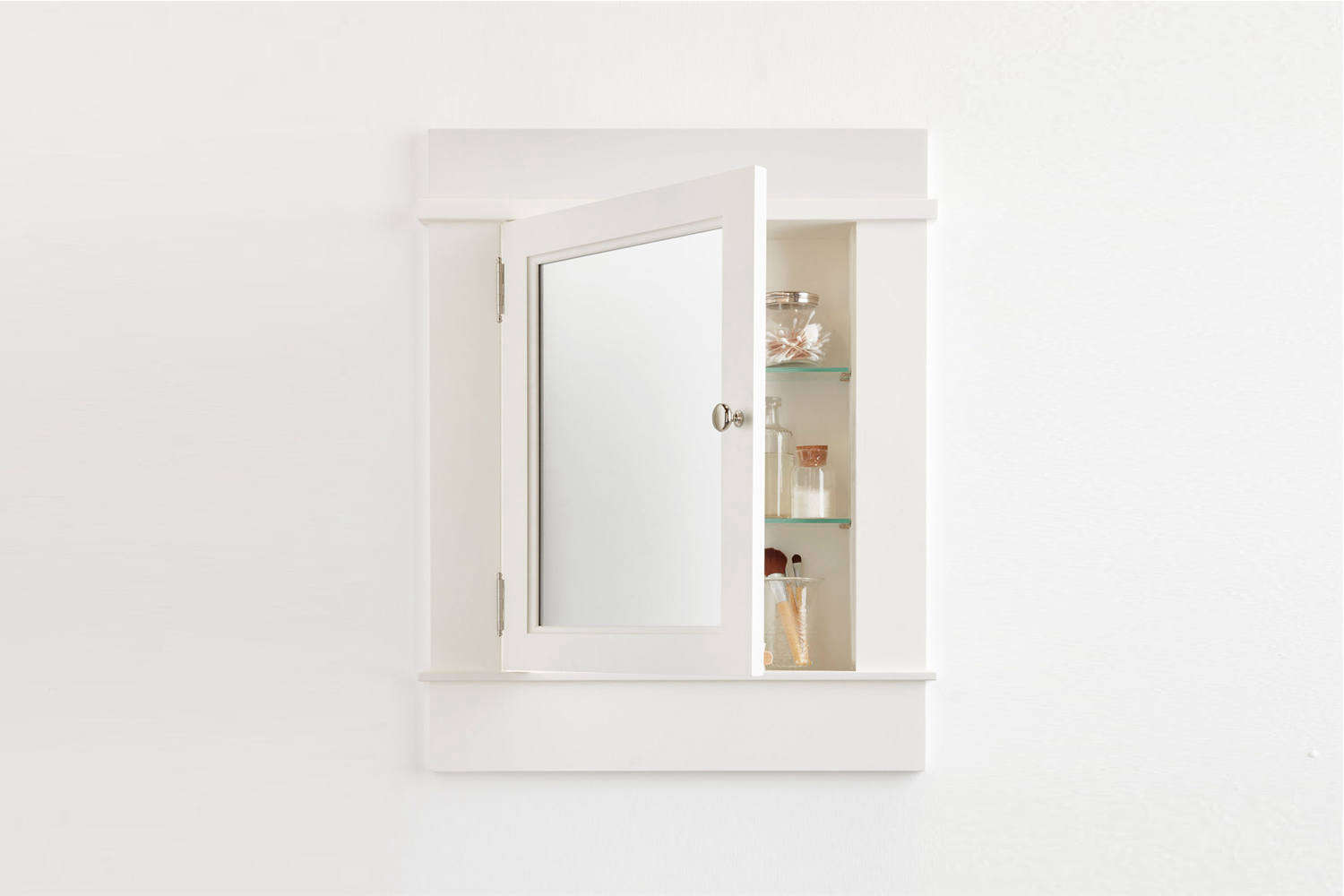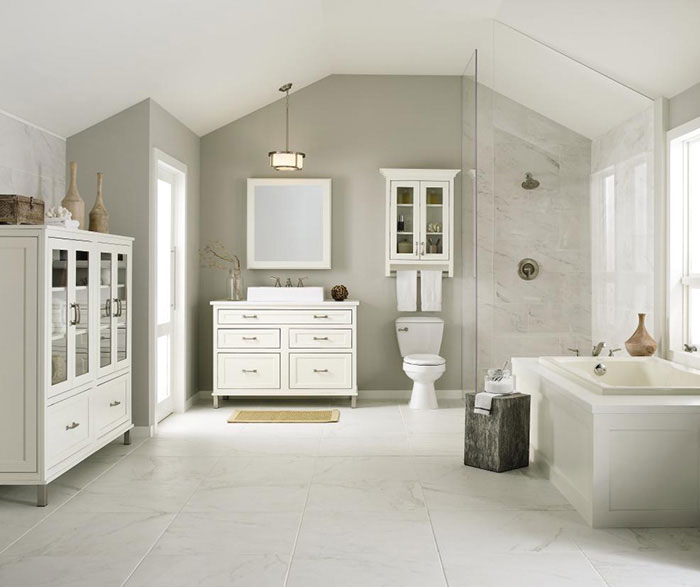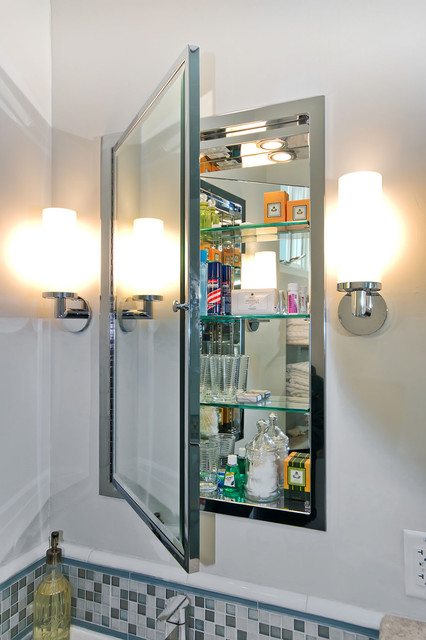Introduction to Inset Bathroom Cabinets
Inset bathroom cabinets are a classic and elegant choice for bathroom storage. Unlike traditional overlay cabinets, inset cabinets have doors and drawers that fit flush with the frame, creating a seamless and sophisticated look. This style of cabinetry has been around for centuries and is admired for its craftsmanship and aesthetic appeal. Let’s discuss what inset bathroom cabinets are, their history, and why they might be the perfect addition to your bathroom.
- Historical Background: Inset cabinets have a rich history dating back to the early 18th century. They were initially popular in European furniture design, particularly in England and France. The precise craftsmanship required to create inset cabinets was a mark of quality and luxury. Over time, this style made its way into American homes, becoming a staple in traditional and high-end kitchen and bathroom designs.
- Construction and Design: The defining feature of inset cabinets is that the doors and drawers are set inside the cabinet frame, rather than resting on the outside. This requires precise measurements and skilled craftsmanship to ensure a perfect fit. The result is a clean, streamlined look that is both functional and aesthetically pleasing. The cabinet doors often feature visible hinges, which can add to the overall charm and character of the piece.
- Aesthetic Appeal: One of the main reasons homeowners choose inset cabinets is their timeless and elegant appearance. The flush design creates a sleek and uncluttered look that works well in various bathroom styles, from traditional to modern. The attention to detail in the construction of inset cabinets adds a sense of quality and luxury to any bathroom space.
- Customization Options: Inset cabinets offer a high level of customization. Because they require precise measurements and expert craftsmanship, they are often made to order. This allows homeowners to choose from a wide range of materials, finishes, and hardware options to create a truly personalized look. Whether you prefer a classic wood finish or a modern painted look, inset cabinets can be tailored to match your vision.
- Functional Benefits: Beyond their aesthetic appeal, inset cabinets also offer practical benefits. The flush design means that there are no overhanging doors or drawers, which can be particularly useful in smaller bathrooms where space is at a premium. The sturdy construction and high-quality materials used in inset cabinets also ensure durability and longevity.
- Investment Value: While inset cabinets can be more expensive than traditional overlay cabinets, they are often seen as a worthwhile investment. Their timeless design and superior craftsmanship add value to your home and can be a selling point if you decide to move. Inset cabinets are a statement of quality and taste, making them a desirable feature in any bathroom.
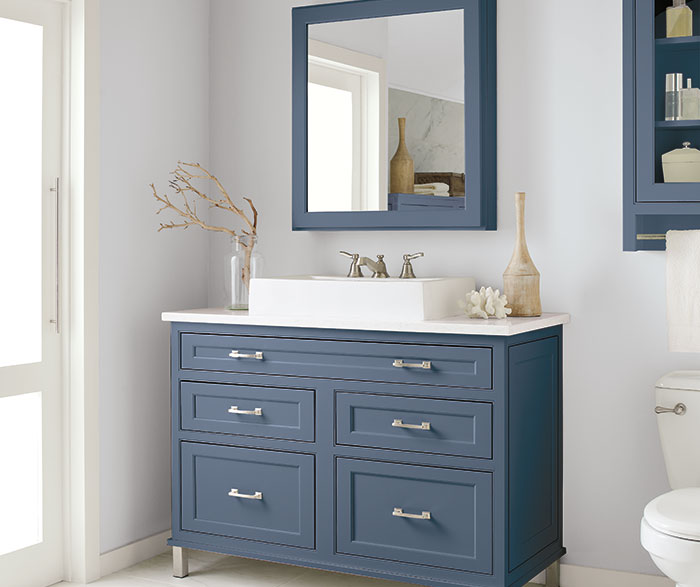
Benefits of Choosing Inset Cabinets for Your Bathroom
Choosing the right cabinets for your bathroom is crucial for both functionality and aesthetics. Inset bathroom cabinets offer a range of benefits that make them a popular choice among homeowners and designers. From their sleek appearance to their durability and customization options, inset cabinets can elevate the look and feel of your bathroom. Below are the key benefits of choosing inset cabinets for your bathroom.
Sleek and Elegant Design
Inset cabinets are known for their sleek and elegant design. The doors and drawers sit flush with the cabinet frame, creating a clean and seamless look. This design is particularly appealing in modern and contemporary bathrooms, where a streamlined appearance is desired. The minimalist aesthetic of inset cabinets can make your bathroom feel more spacious and uncluttered.
High-Quality Craftsmanship
The construction of inset cabinets requires precise measurements and skilled craftsmanship. This attention to detail results in a high-quality product that stands out in terms of both appearance and durability. Inset cabinets are often made from premium materials and feature solid wood construction, ensuring they can withstand the humidity and wear and tear of a bathroom environment.
Customizable Options
One of the significant advantages of inset cabinets is their customization options. Because they are often made to order, you can choose from a variety of materials, finishes, and hardware to match your bathroom’s design scheme. Whether you prefer a traditional wood finish, a sleek painted look, or something more unique, inset cabinets can be tailored to your preferences.
Enhanced Durability
The sturdy construction of inset cabinets means they are built to last. The precise fit of the doors and drawers reduces the risk of warping or misalignment over time. Additionally, the high-quality materials used in their construction, such as solid wood or high-grade plywood, ensure that inset cabinets can withstand the daily use and moisture typical in a bathroom setting.
Maximized Space
Inset cabinets can help maximize the available space in your bathroom. The flush design means there are no overhanging doors or drawers, which can be particularly beneficial in smaller bathrooms. This design feature allows for easier movement and more efficient use of space, making your bathroom feel larger and more open.
Timeless Appeal
The timeless appeal of inset cabinets is another significant benefit. Their classic design ensures that they will not go out of style, providing long-term value to your home. Inset cabinets can seamlessly blend with various design styles, from traditional to contemporary, ensuring they remain a stylish and functional choice for years to come.
Design Styles and Options for Inset Bathroom Cabinets
Inset bathroom cabinets are highly versatile and can be customized to suit a wide range of design styles. Whether you prefer a classic, traditional look or a sleek, modern aesthetic, there are design options available to match your vision. Below are different design styles and customization options for inset bathroom cabinets, helping you create a bathroom that reflects your taste and style.
Traditional Design
Traditional inset cabinets often feature ornate details and classic finishes. Raised panel doors, decorative molding, and intricate hardware are common elements in this design style. Traditional inset cabinets are typically made from rich, warm woods like cherry, mahogany, or oak, and may be stained to highlight the natural grain of the wood. This style is perfect for creating a timeless, elegant bathroom.
Modern and Contemporary Design
For a modern or contemporary look, opt for inset cabinets with clean lines and minimalistic features. Flat panel doors, sleek hardware, and high-gloss finishes are hallmarks of this design style. Modern inset cabinets are often painted in neutral colors like white, gray, or black, but can also be customized with bold, vibrant colors for a more striking appearance. The simplicity and sophistication of modern inset cabinets make them a popular choice for contemporary bathrooms.
Transitional Design
Transitional design blends elements of traditional and modern styles, creating a balanced and versatile look. Inset cabinets in a transitional style may feature a combination of classic wood finishes and modern hardware. For example, you might choose shaker-style doors with a subtle stain and pair them with sleek, brushed nickel handles. This design approach offers flexibility and can easily adapt to changing design trends.
Rustic and Farmhouse Design
Rustic and farmhouse design styles emphasize natural materials and a cozy, welcoming aesthetic. Inset cabinets in these styles often feature distressed finishes, reclaimed wood, and rustic hardware like wrought iron or antique brass. Beadboard paneling and open shelving are common elements in rustic and farmhouse designs, adding to the charm and character of the space. These styles are perfect for creating a warm and inviting bathroom.
Custom Finishes and Hardware
One of the key benefits of inset cabinets is the ability to customize finishes and hardware to match your design vision. You can choose from a variety of paint colors, wood stains, and glazes to achieve the perfect look. Additionally, the hardware you select, such as knobs, pulls, and hinges, can significantly impact the overall style of your cabinets. Whether you prefer classic brass, modern chrome, or something more unique, there are endless options to explore.
Unique Design Features
Inset cabinets offer the opportunity to incorporate unique design features that enhance both functionality and aesthetics. Consider adding glass-front doors to showcase decorative items or built-in lighting to highlight the cabinet interiors. Soft-close hinges and drawer slides can improve the user experience, while integrated organizational features like pull-out trays, dividers, and custom shelving can maximize storage efficiency. These thoughtful design elements can elevate the overall look and feel of your bathroom.
Comparing Inset Cabinets to Overlay Cabinets
When choosing bathroom cabinets, one of the key decisions you’ll need to make is whether to go with inset or overlay cabinets. Both styles have their unique benefits and aesthetic qualities, making it essential to understand the differences before making a decision. Let’s compare inset cabinets to overlay cabinets, highlighting the pros and cons of each to help you determine which style is best for your bathroom.
Design Differences
The primary difference between inset and overlay cabinets lies in the door and drawer placement. Inset cabinets have doors and drawers that sit flush with the cabinet frame, creating a smooth and seamless look. Overlay cabinets, on the other hand, have doors and drawers that sit on top of the cabinet frame, overlapping the edges. This results in a more prominent and layered appearance.
Aesthetic Appeal
Inset cabinets are often chosen for their sleek, streamlined appearance and classic elegance. The flush design creates a clean and sophisticated look that works well in various design styles. Overlay cabinets, however, offer a more versatile aesthetic. Depending on the overlay type (full or partial), they can create a modern, traditional, or transitional look. Full overlay cabinets provide a seamless, contemporary appearance, while partial overlay cabinets have a more traditional feel with visible cabinet frames.
Construction and Craftsmanship
Inset cabinets require precise measurements and skilled craftsmanship to ensure the doors and drawers fit perfectly within the frame. This level of detail often results in a higher-quality, more durable product. Overlay cabinets are generally easier to construct, as the doors and drawers do not need to fit within the frame precisely. This can make overlay cabinets a more cost-effective option without sacrificing quality.
Cost Considerations
Inset cabinets are typically more expensive than overlay cabinets due to the higher level of craftsmanship and precision required in their construction. The materials used in inset cabinets are often of higher quality, contributing to the overall cost. Overlay cabinets, being easier to construct, are generally more affordable. However, the price can vary depending on the materials, finishes, and hardware chosen.
Space and Storage
Inset cabinets can help maximize space in smaller bathrooms, as there are no overhanging doors or drawers. This design feature allows for easier movement and more efficient use of space. Overlay cabinets, particularly full overlay, can offer more storage space inside the cabinets, as the doors and drawers are mounted on the outside of the frame. Partial overlay cabinets may have reduced storage space due to the visible frame taking up some of the interior space.
Durability and Maintenance
Both inset and overlay cabinets can be durable and long-lasting if constructed from high-quality materials and maintained properly. Inset cabinets, with their precise fit and sturdy construction, are often seen as more durable. However, they may require more maintenance to ensure the doors and drawers remain properly aligned. Overlay cabinets are generally easier to maintain, as the doors and drawers do not need to fit within the frame as precisely. Regular cleaning and occasional adjustments can keep both styles looking their best.
Materials and Finishes for Inset Bathroom Cabinets
The choice of materials and finishes for your inset bathroom cabinets can significantly impact their appearance, durability, and overall style. From the type of wood to the color and hardware, every detail contributes to the final look of your bathroom. Below are different materials and finishes available for inset bathroom cabinets, helping you make informed decisions for your next renovation project.
Wood Types
The type of wood used for inset cabinets plays a crucial role in their durability and aesthetic appeal. Common choices include maple, oak, cherry, and walnut. Maple is known for its smooth, fine grain and light color, making it a versatile choice for various finishes. Oak offers a more pronounced grain and is highly durable, ideal for traditional and rustic designs. Cherry wood has a rich, warm color that deepens with age, adding a touch of elegance to any bathroom. Walnut, with its dark, luxurious appearance, is perfect for creating a sophisticated, high-end look.
Painted Finishes
Painted finishes are a popular choice for inset bathroom cabinets, offering a clean and modern appearance. White and off-white are classic options that create a bright, airy feel in the bathroom. Gray and navy are also trending colors that add a contemporary touch. Custom paint colors allow for endless possibilities, enabling you to match your cabinets to your bathroom’s color scheme. Painted finishes are easy to clean and can be touched up if needed, maintaining their fresh appearance over time.
Stained Finishes
Staining is a great way to highlight the natural beauty of the wood grain in your inset cabinets. Stained finishes range from light, natural hues to deep, rich tones. Light stains, such as natural or honey, showcase the wood’s natural characteristics and work well in rustic or farmhouse designs. Medium stains, like chestnut or pecan, offer a warm, inviting look suitable for traditional and transitional styles. Dark stains, such as espresso or ebony, create a dramatic, sophisticated appearance perfect for modern and contemporary bathrooms.
Glazed Finishes
Glazing is an additional finish option that can add depth and character to your inset cabinets. A glaze is applied over a painted or stained finish, creating a subtle, aged effect. This technique highlights the details and contours of the cabinet doors and drawers, adding a touch of elegance and charm. Glazed finishes are particularly popular in traditional and vintage-inspired designs, offering a timeless, handcrafted look.
Hardware Choices
The hardware you choose for your inset cabinets can significantly impact their overall style. Classic hardware options include brass, bronze, and nickel, each offering a different aesthetic. Brass and bronze provide a warm, traditional look, while nickel offers a sleek, modern appearance. For a contemporary touch, consider black or matte hardware. The style of the hardware, whether it be knobs, pulls, or handles, should complement the overall design of your bathroom.
Custom Finishes
Custom finishes allow you to create a truly unique look for your inset bathroom cabinets. This can include distressed finishes for a vintage, weathered appearance, or custom paint colors that match your bathroom’s design scheme perfectly. Additionally, custom hardware options, such as hand-forged iron or unique, artisanal pieces, can add a personal touch to your cabinets. Working with a skilled craftsman or designer can help you achieve the exact look and feel you desire for your bathroom.
Installation Tips for Inset Bathroom Cabinets
Installing inset bathroom cabinets requires precision and attention to detail to ensure a perfect fit and long-lasting durability. Proper installation not only enhances the appearance of your bathroom but also ensures the functionality and longevity of the cabinets. Below we provide essential tips for installing inset bathroom cabinets, helping you achieve a professional and polished result.
Measuring and Planning
Accurate measurements are crucial for the successful installation of inset cabinets. Begin by measuring the dimensions of your bathroom and the space where the cabinets will be installed. Account for any obstructions, such as plumbing or electrical outlets, that may affect the placement of the cabinets. Create a detailed plan that includes the layout and dimensions of each cabinet, ensuring a precise fit within the available space.
Preparing the Space
Before installing the cabinets, ensure the installation area is clean and level. Remove any existing cabinets or fixtures and repair any damage to the walls or flooring. Check that the walls are plumb and the floor is level, as uneven surfaces can cause alignment issues during installation. Use a level and shims to make any necessary adjustments, creating a stable and even foundation for the cabinets.
Assembling the Cabinets
If your inset cabinets are delivered in pieces, carefully assemble them according to the manufacturer’s instructions. Use clamps and a square to ensure the cabinet frames are perfectly aligned. Secure the joints with screws or nails, and reinforce the corners with brackets if needed. Double-check the alignment of the doors and drawers, making any necessary adjustments to ensure a precise fit.
Installing the Base Cabinets
Begin the installation process with the base cabinets. Position the first cabinet in place and use a level to ensure it is plumb and level. Secure the cabinet to the wall studs with screws, ensuring a strong and stable attachment. Continue installing the remaining base cabinets, using clamps to align the frames and securing them to the wall and each other. Use shims to adjust the height and level of each cabinet as needed.
Installing the Wall Cabinets
Once the base cabinets are installed, move on to the wall cabinets. Position the first wall cabinet in place, ensuring it is level and aligned with the base cabinets. Secure the cabinet to the wall studs with screws, using additional support, such as a ledger board, if needed. Continue installing the remaining wall cabinets, aligning the frames and securing them to the wall and each other. Use shims to make any necessary adjustments for a perfect fit.
Final Adjustments and Finishing Touches
After all the cabinets are installed, make any final adjustments to ensure the doors and drawers are properly aligned and operate smoothly. Install the hardware, such as knobs, pulls, and handles, ensuring they are securely attached and evenly spaced. Apply caulk or trim around the edges of the cabinets to create a seamless and polished look. Finally, clean the cabinets and the surrounding area, removing any dust or debris from the installation process.
Maintenance and Care for Inset Bathroom Cabinets
Proper maintenance and care are essential for keeping your inset bathroom cabinets looking beautiful and functioning well for years to come. Inset cabinets, with their precise fit and high-quality construction, require specific care to maintain their appearance and durability. Belo we provide essential tips for maintaining and caring for your inset bathroom cabinets, ensuring they remain a stunning and functional part of your bathroom.
Regular Cleaning
Regular cleaning is crucial for maintaining the appearance of your inset cabinets. Use a soft cloth or sponge with mild soap and water to wipe down the cabinet surfaces, avoiding harsh chemicals that can damage the finish. Pay special attention to the areas around the handles and hinges, where dirt and grime can accumulate. Dry the cabinets thoroughly after cleaning to prevent moisture damage.
Protecting the Finish
Protecting the finish of your inset cabinets is essential for preserving their beauty. Avoid placing hot or wet items directly on the cabinet surfaces, as this can cause damage to the finish. Use coasters, placemats, or trivets to protect the cabinets from heat and moisture. Additionally, avoid using abrasive cleaners or scrub brushes that can scratch the surface of the cabinets.
Addressing Spills and Stains
Promptly address any spills or stains on your inset cabinets to prevent damage. Use a soft cloth to blot the spill, avoiding rubbing, which can spread the stain. For tougher stains, use a mixture of baking soda and water or a gentle, non-abrasive cleaner. Test any cleaning solution on an inconspicuous area of the cabinet first to ensure it does not damage the finish.
Maintaining the Hardware
The hardware on your inset cabinets, such as knobs, pulls, and hinges, should be regularly maintained to ensure smooth operation. Tighten any loose screws and lubricate the hinges with a small amount of silicone spray or petroleum jelly to prevent squeaking. Clean the hardware with a soft cloth and mild soap, avoiding abrasive cleaners that can damage the finish.
Preventing Moisture Damage
Bathrooms are prone to high humidity and moisture, which can damage inset cabinets over time. To prevent moisture damage, ensure your bathroom is well-ventilated. Use exhaust fans or open windows during and after showers to reduce humidity levels. Additionally, avoid leaving wet towels or washcloths on the cabinet surfaces, as prolonged exposure to moisture can cause warping or discoloration.
Inspecting and Repairing
Regularly inspect your inset cabinets for any signs of damage or wear. Check for loose hinges, handles, or drawer slides, and address any issues promptly to prevent further damage. If you notice any scratches, chips, or other damage to the finish, consider using a touch-up kit or contacting a professional for repairs. Regular maintenance and prompt repairs will help extend the life of your inset cabinets and keep them looking their best.
White Inset Bathroom Cabinets – Decora Cabinetry
Easy Pieces: Inset Mirrored Medicine Cabinets
White Inset Bathroom Cabinets – Decora Cabinetry
Should You Get a Recessed or Wall-Mounted Medicine Cabinet?
Bathroom Medicine Cabinet, Aluminum, Recessed/Surface
Related Posts:
